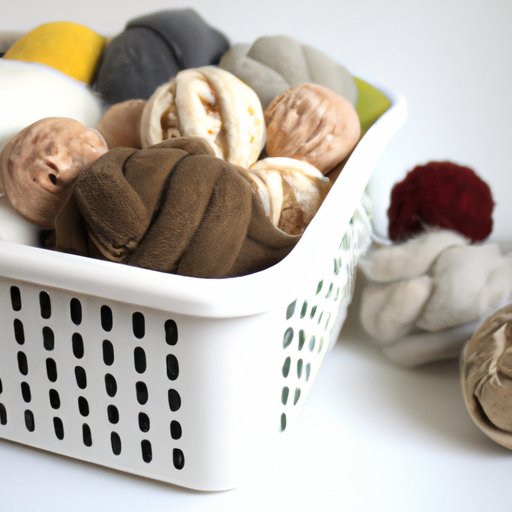Introduction
Wool dryer balls are a natural and eco-friendly alternative to chemical-laden fabric softeners. Made from 100% wool yarn, these felted balls are designed to reduce drying time, reduce static cling, and soften clothes naturally without the use of harsh chemicals. In this article, we’ll explore the benefits of wool dryer balls, how to use them effectively, the science behind their mechanics, and the pros and cons of using them compared to traditional fabric softeners.
How to Use Wool Dryer Balls for a More Eco-Friendly Laundry Routine
Using wool dryer balls is quick and easy. Simply toss three to four balls into the dryer with your wet laundry and turn on the machine. For best results, use medium to high heat settings and leave the dryer door slightly ajar between loads. The balls will help to fluff up the laundry as it dries, reducing drying time by up to 25%. Additionally, the balls will help to keep clothing soft and reduce static cling.
For an even more effective laundry routine, try adding a few drops of essential oil to each ball before tossing them into the dryer. The essential oils will infuse your laundry with a pleasant scent that lasts long after the clothes have been removed from the machine. You can also add a few drops of vinegar to the balls to help soften clothes and reduce static cling.
The Science Behind Wool Dryer Balls: How Do They Work?
Wool dryer balls work in two ways: first, they help to fluff up laundry as it tumbles around in the dryer, which helps to reduce drying time; second, they absorb moisture from the air, which helps to reduce static cling. The balls are made from 100% wool yarn, which is felted together to create a dense, yet lightweight material that won’t unravel or shed lint into your dryer. As the balls move around in the dryer, they help to separate and lift the fabric fibers, allowing hot air to circulate more effectively and dry the clothes faster.
There are two types of wool dryer balls available: felted wool balls and un-felted wool balls. Felted wool balls are denser and more durable than un-felted balls, and are better suited for larger loads. Un-felted wool balls are lighter and softer, making them ideal for smaller loads. Both types of balls can be used to reduce static cling and soften clothes.
The Pros and Cons of Wool Dryer Balls vs. Traditional Fabric Softeners
Wool dryer balls offer several advantages over traditional fabric softeners. They are eco-friendly and free of harsh chemicals, making them safe for people with sensitive skin and allergies. Additionally, they are reusable and long-lasting, so you don’t have to keep buying new bottles of fabric softener. Finally, they are much less expensive than fabric softeners, so you can save money in the long run.
However, there are some disadvantages to using wool dryer balls. They do not provide the same level of softness and scent that fabric softeners do, and they can take longer to dry clothes than fabric softeners. Additionally, it can be difficult to clean wool dryer balls, especially if you use essential oils or vinegar, so you may need to replace them more often than you would with fabric softeners.
Conclusion
Wool dryer balls are a great way to reduce drying time, reduce static cling, and soften clothes naturally without the use of harsh chemicals. They are eco-friendly, reusable, and much less expensive than traditional fabric softeners. While they may not provide the same level of softness and scent as fabric softeners, they are still an effective and economical choice for an eco-friendly laundry routine.
By understanding how wool dryer balls work and how to use them correctly, you can enjoy all the benefits they have to offer. With a little bit of practice and patience, you can create a more sustainable and cost-effective laundry routine that is good for both your wallet and the environment.


